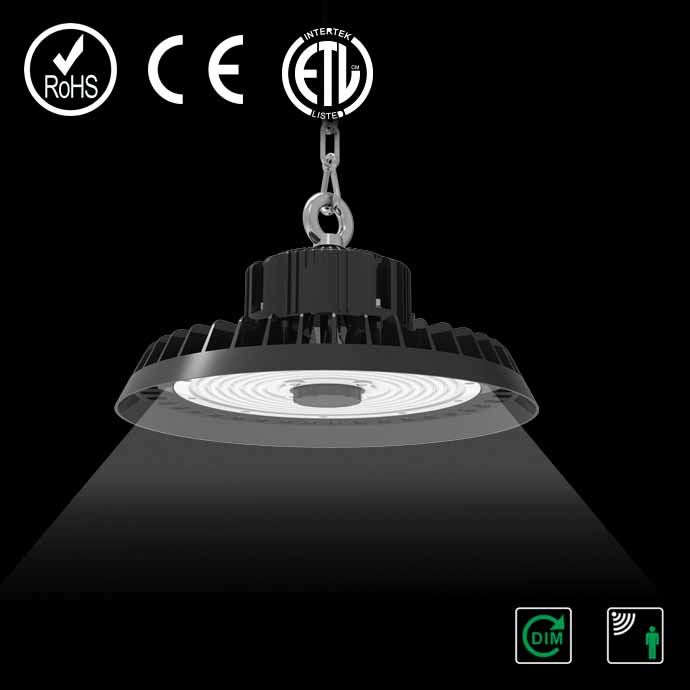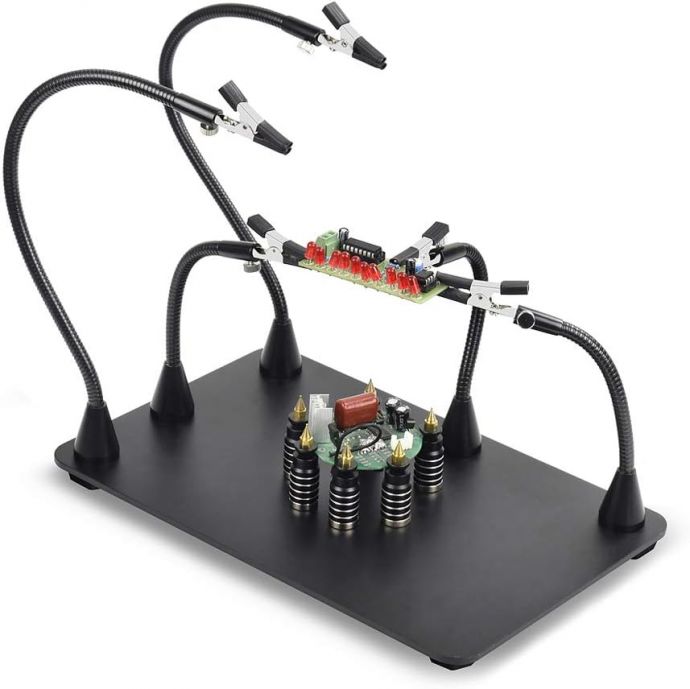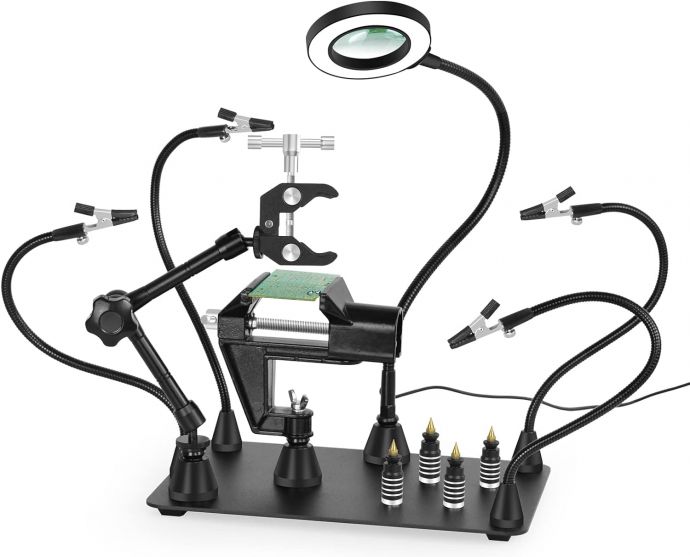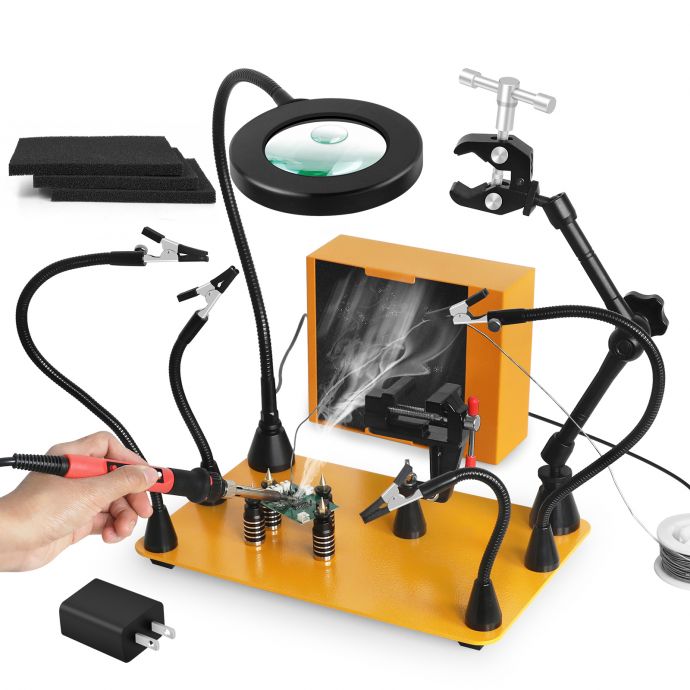In the world of electronics and DIY projects, soldering often plays a central role. While soldering can be an exciting and rewarding task, it's not without its hazards. One of the primary concerns is the smoke and fumes produced during the process. These emissions contain a mix of harmful chemicals, which include rosin-based flux and possibly lead, that can pose health risks when inhaled over time. A solder fume extractor is therefore a critical tool in maintaining a safe and pleasant soldering environment.
Understanding the need for a fume extractor is the first step toward crafting a healthier workspace. Let's delve into the intricacies of building your own efficient 12V solder fume extractor, offering you a cost-effective and customizable solution to standard models found in the market.

### The Importance of a Fume Extractor
When soldering, particularly for extended periods, the fumes can cause irritation to the eyes and respiratory tract. The risks are especially pronounced in poorly ventilated areas. A solder fume extractor essentially acts like a vacuum designed specifically to capture and filter these fumes, drawing them away from your breathing zone. Employing a fume extractor not only protects your health but also helps to maintain a clean and efficient workspace.
### Designing Your DIY Solder Fume Extractor

Creating a 12V solder fume extractor is an accessible project for those familiar with basic DIY principles and electronics. The design revolves around simplicity, efficiency, and effectiveness, allowing you to enjoy an upgraded soldering experience without an overwhelming investment.
#### Materials Needed
1. **12V DC Fan**: A computer fan (120mm is recommended for better airflow).

2. **Activated Carbon Filter**: These can be sourced from air purifiers or home improvement stores.
3. **Power Supply**: A 12V DC adapter or a battery pack suitable for portable operation.
4. **Fan Guard and Case**: A grill or cover to protect the fan blades and support the filter.
5. **Switch**: To control the on/off operation of the fan.
6. **Wire and Connectors**: Basic electrical wire, connectors, and optionally, a soldering iron for secure connections.
7. **Housing Material**: Wood, plastic, or any sturdy material to construct the frame.

#### Steps to Build
1. **Design the Frame**: Depending on available materials, design a frame that fits your workspace. The fan should be securely mounted within this frame, ensuring enough room for the filter and sufficient air intake.
2. **Mount the Fan and Filter**: Install the fan at the back of your frame, ensuring it will draw air through the filter, which should be mounted at the front. The activated carbon filter needs to fit snugly to maximize its efficiency in trapping particulates.

3. **Electrical Setup**: Wire the fan to the power source using connectors. Include a switch for convenience, allowing you to operate the fan only when needed. For an added touch, consider wiring in an LED to indicate when the fan is operational.
4. **Assemble the Housing**: Construct the housing to encapsulate the system, securing the fan and filter firmly. Ensure there are no gaps that might allow the fumes to escape without being filtered.
5. **Testing and Optimization**: Once assembled, test your fume extractor to ensure it operates as intended. Check for a good balance of airflow and filtration efficiency, adjusting the setup if necessary.

### Tailoring the Extractor to Your Needs
One advantage of a DIY approach is the ability to customize your fume extractor to fit your specific workspace and needs:
- **Portability**: If you often solder in different locations, consider incorporating a battery pack. This will allow for greater mobility, ensuring that you're protected wherever you work.

- **Soundproofing**: Depending on the fan used, noise might be a concern. Add sound-dampening materials to the frame to minimize operational noise.
- **Enhanced Filtering**: For those working with more hazardous materials, enhance the filtration system by adding an additional layer of HEPA filter behind the activated carbon filter. This will ensure even smaller particulates are captured.
### Maintaining Your Fume Extractor
Regular maintenance is key to upholding the performance and longevity of your DIY fume extractor:
- **Filter Replacement**: The activated carbon filter will eventually become saturated with particulates. Regularly check and replace it to ensure the extractor remains effective.
- **Fan Cleaning**: Dust and solder particulates may accumulate on the fan blades over time, reducing performance. Clean the fan periodically to maintain optimal airflow.
- **Electrical Checks**: Regularly inspect the wiring and connections to prevent shorts or failures, ensuring that all components are functioning correctly.
### Safety and Considerations
While creating and using a DIY fume extractor significantly enhances your safety during soldering, additional measures can further reduce risks:
- **Workspace Ventilation**: Ensure your workspace is adequately ventilated, even with a fume extractor in place. Open a window or use an additional fan to circulate fresh air.
- **Protective Equipment**: Consider using safety goggles and a respirator mask for extra personal protection during prolonged soldering sessions.
### Conclusion
Crafting your own 12V solder fume extractor is a rewarding project that not only elevates your DIY skills but also significantly enhances the safety of your workspace. By understanding the components and operation of fume extractors, you can tailor your design to fit your specific needs, ensuring that your soldering station is as safe and efficient as possible.
This hands-on project not only provides peace of mind but also fosters a deeper understanding of the technological principles that underlie many electronics hobbies. Whether you’re a hobbyist or a professional, building your own fume extractor is a step toward mastering the DIY experience and prioritizing health in your creative pursuits.









